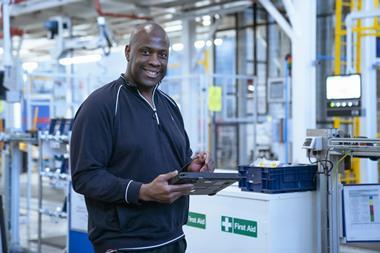Toyota’s famed philosophy of constant improvement is well represented at its plant near Bengaluru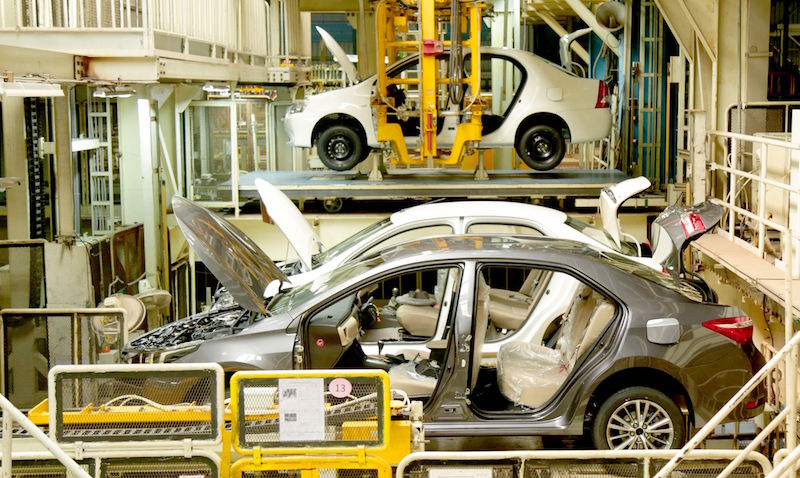 It’s a given that all automotive manufacturing plants are continuously monitoring costs and efficiency, but at Toyota Kirloskar Motor’s (TKM) Bidadi plant there has been a real sense of urgency revealed in the detail of the operation’s processes to find improvements.
It’s a given that all automotive manufacturing plants are continuously monitoring costs and efficiency, but at Toyota Kirloskar Motor’s (TKM) Bidadi plant there has been a real sense of urgency revealed in the detail of the operation’s processes to find improvements.
Like many others in India this plant currently suffers from a big gap in capacity and utilisation (210,000 vs. 75,000 upa), but positive steps are being taken to maximise efficiency and cut cost where possible. This has lead to the minutiae of each operation, in each section, in each production area being scrutinised and data recorded, analysed and compared to identify any areas of weakness in hitting targets. As with all things Toyota this process has been given a Japanese title: ‘Kikikan’, roughly translated as ‘sense of emergency’
Raju Ketkale, senior vice president, Plant 1 & 2 Production Division, explained that the people at the plant had become the central focus in improving operations and finding efficiencies. He noted that this process involved everyone at the plant, at all levels, involved in production operations.

Close attention to costs In the ‘Ohbeya’ room deputy general manager Plant Administration, Vishwanath Sharma explained the Cost Reduction Innovation (CRI) process that had been initiated. The function of this room is to collate all the production data in one place to offer a complete view of targets, costs and efficiency across all operations. This in turn creates a flow of information that reveals in detail which targets have been hit and those that have been missed, and how those missed targets in a particular section impacted on other operations. It also helps to visualise where solutions that have been put in place have proved successful and the level of improvement achieved. In the case of the missed targets it is possible to look in detail at where the issue is, if it has changed and why, if the solution in place needs to be adapted or completely rethought.
The biggest focus is on the in-plant fixed costs which can be up to 30% of the overall in-house costs. According to Sharma a key part of the process is absorbing the annual inflation of these costs. The in-house costs are broken down into: direct materials (steel, etc.), in-direct materials (PPE, etc.), energy, labour, depreciation
Smooth and simple operationThe CRI process undertaken at Bidadi has three pillars: Smooth (consistency in production, operations and quality); Slim (minimising the number of operations and equipment needed); Simple (reducing complexity). These are intended to provide guidelines to each section when developing solutions.
“We are in the process of up grading Plant 1 and we have so far invested INR400m (US$5.9m) in this project. This will see big changes to all production operations bringing them inline with those in Plant 2. The aim is to have the project completed by 2020” – Raju B Ketkale, TKM
When reviewing the targets it’s those missed which are given priority, with a ‘bad news first’ approach taken, examining and critiquing the areas of concern. This is seen to be the most motivating and useful approach to take.
An example of the detail involved is highlighted in energy efficiency (Slim). This looks at demand and supply, in this case compressed air, which is used throughout the plant to power tooling. The data showed to me identified the demand (for compressed air) from individual areas of operation, establishing patterns of peaks and troughs in demand and highlighting the consistency of these patterns. Also how effective any energy saving solutions implemented had been. These might cover compressed air system integrity (leakage) and wasteful usage (un-necessary operation).
Similarly labour is subject to scrutiny. Production efficiency targets (PEFF) are intended to identify inconsistency and any wasteful assembly operations. These also help to demonstrate to the workforce a clear link between working practices and efficiency.
Individual production areas (paint, press, body, assembly) are also looked at in terms of profitability. The generation of cost cutting ideas always exceeds that required by targets but this excess allows for the solutions that don’t work. Although Kikikan creates a sense of emergency (which there is) it also serves the plant’s development in the longer term as production increases. What becomes apparent is the development and implementation of multiple small, low-cost kaizen to create a larger overall effect.
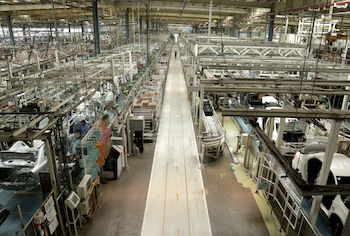 Parts delivery to the assembly line is a ’zero touch’ operation
Parts delivery to the assembly line is a ’zero touch’ operationThree line press shopThe Plant 2 press shop has three lines utilising fully automated Komatsu servo press technology, which I was told offers significant energy savings. The two larger press lines produce class-A panels and are capable of operating at a maximum 16 strokes per minute (spm). The smaller class-C line produces smaller structural parts. Other sub-assembly pressed parts come from an outside supplier
Blanks are also delivered from an outside supplier and are inspected and batch checked for steel thickness, quality, etc. In-line with Toyota’s just-in-time philosophy the press shop carries only a 2 hour inventory of blanks at any time. Since 2013 the press shop has been using a new cleaning process for the blanks that reduces the chances of defects in the pressed panels.
One of the large presses was producing large side frame parts in a three stage process. The material handling is automated at each stage, using Motorman robots, until the final removal. Then, as is common, the final handling is done manually as the workers visually inspect each panel and carefully place in to the specialised racking to avoid any damage to the class-A finish.
Complete die change over takes around 30mins including changing the handling tools for the robots. The next batch dies and a frame carrying the appropriate handling tools are fed in to one side of the press as the others are taken out the opposite side. Using the tried and trusted Kanban system the press shop currently processes various parts batches (for both vehicle production and spare parts) on monthly production schedule.
Bodyshop kaizenCurrently operating on two shifts, this area has standard mix of automation and manual operations. It uses 131 Kawasaki robots and has 134 manual (mainly subassembly) operations. The majority is resistance spot welding but CO2 welding is used for certain parts, mainly where higher strength is required (floors, sills etc.). It produces vehicles using Toyota’s Global Body System architecture and can produce up to eight different models.
A takt time of over 3 minutes in this section reflects the current low level of utilisation and as the senior managers had discussed, the focus on individuals taking responsibility for improving operations and efficiencies was evident. There were a lot of small kaizen throughout the bodyshop and some of these were demonstrated at one station for hood assembly. The panels have to fit into a special jig and placing and removal needs to be quick and precise. The team member demonstrated the use of some simple and unobtrusive tabs that helped to quickly place and accurately locate each panel for processing without risk of error or damage. Also removal of the panel was very tricky due to a number of locating pins, again slowing process. A very simple foot operated lever had been devised and installed to release the panel from the jig. The team member demonstrated the operation both with and without the release lever and it obviously made a considerable difference. This station also had a lot of small ergonomic changes not obvious to the casual observer. The digital count display for the team member had been repositioned to eliminate the need to look up from the job and a parts cart had been repositioned to improve the work station ergonomics along with the production data sheet also relocated for ease of viewing by the operative. Small but effective changes devised and implemented by the line worker to improve the efficiency of the operation.
[sam_ad id=17 codes='true']Low tech automation was also in evidence here. A final step at this station requires sealant to be injected into various parts of the hood assembly. This could be automated using a robot as an alternative to the team member applying the sealant manually, however, the team had developed a simple but effective system to complete the sealant operations in one step. Locating the hood in position the team member lowers a multiple nozzle sealant dispenser designed to fit exactly in all the access points and dispense sealant in one operation; in operation very simple and effective.
Dojos to inspire ideasTo encourage and assist in the creation of useful kaizen there are a number of Dojos or class rooms around the plant. One such Dojo is in the general assembly area called the Karakuri room. This is a really intriguing area. Set up are various examples of pivots, cams, spring loadings, etc. as a means to actuate gates, lifts and latches. The idea is for the team members to apply these basic principles to developing solutions to improve the operation of their section or station. There were some neat and very simple examples: a nut-driver tool holder assembly is suspended above two containers one holding nuts, the other bolts. When the team member places the nut-driver tool in its holder the weight causes the assembly and two magnetic rods to lower via a carefully balanced spring/hoist mechanism. Each of the magnetic rods rests in one of the containers. When the nut-driver is retrieved from its holder the assembly rises up lifting a nut and bolt from the respective container ready for installation.
‘Zero touch’ operation Line-side racking has also been looked at to minimise manual operations in feeding fresh boxes of parts and removing the empties. Various solutions have been tried out with the final version having a simple cam system that when the tugger driver pulls into a set of guide rails along side the empty line-side racks the cam on the racks actuates a lever on the re-supply cart releasing fresh boxes of parts to the station. At the same time empty boxes are returned to the re-supply cart all vie a gravity fed mechanism. This operation is called ‘zero touch’ in that neither the driver nor team member has to touch any of the parts boxes. This very simple, low tech and importantly low cost solutions seems effective and given Toyota’s strong adherence to a JIT philosophy clearly this has to work consistently.
Walking down the assembly line something more obvious catches the eye. On the chassis line, the point at which the bodies are fitted with steering, suspension, braking system, fuel line etc. (mainly underbody work) the vehicle bodies are turned so that they are orientated 90° to the direction of the flow of the line. This is said to be a more ergonomic positioning of the vehicle for the installation of underbody parts and reduce the space taken by each vehicle as it passes this point on the line. Toyota calls this a Yokonagashi line.
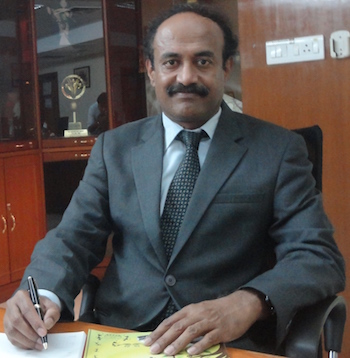 Mr Raju B Ketkale, Senior Vice President, Toyota Kirloskar Motor
Mr Raju B Ketkale, Senior Vice President, Toyota Kirloskar MotorAMS: You have started production of the new Innova Crysta, which is larger than to old model. Is this a new platform?
Raju B Ketkale (RK): This is new platform but the changes to the dimensions have come from customer feedback. The main changes are to the suspension and transmission but this only required very small changes to the manufacture of this model. We have built a new line for the production of Innova and the Fortuner
AMS: Will you be building vehicles with Toyota’s New Global Architecture (TNGA)?
RK: Yes the new models feature this architecture. This is an on-going project to develop vehicle platforms, to make them more cost effective to build.
AMS: Do you build for export here?
RVK: We build around 20,000 vehicles per year for export. We export three models: Etios, Etios Liva and the Etios Cross. The main market for these is South Africa but we also export some to Nepal and Bhutan. We also export components.
AMS: I heard the term ‘iTime’ being used as I toured the plant. Could you explain this?
RVK: This is actually ‘information time’. Every morning before the start of the shift we have a short meeting to discuss any safety issues noted from the previous day and how to proceed for the next shift. This is done at a group level. There are also some informal meetings [iTimes] during scheduled breaks. It’s a way of communicating any procedural issues that need to be looked at and action taken. They are not always related to technical issues they might also cover HR, or workers personally.
AMS: I’ve seen a lot of kaizen applied here. Has this process of continuous improvement changed the Toyota Production System (TPS)?
RK: The way we produce cars is continually evolving and kaizen is a big part of this. But kaizen is applied at all levels of the operation here, from some of the small ideas from the workers you have seen here to larger plant-level kaizen. TPS allows for this continuous development; the goal remains the same but way to achieve it changes and adapts. The basic principles of TPS have remained the same, but the way we apply these principles will keep evolving.
AMS: Are there any plans to upgrade Plant 1 to the same level as Plant 2?
RK: We are in the process of up grading Plant 1 and we have so far invested INR400m (US$5.9m) in this project. This will see big changes to all production operations bringing them inline with those in Plant 2. The aim is to have the project completed by 2020.
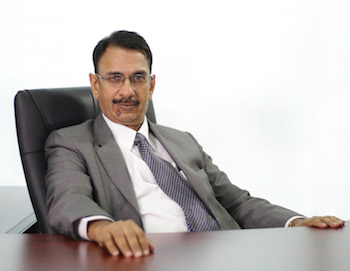 Shekar Viswanathan
Shekar ViswanathanAMS: It’s been suggested that Toyota is planning to build a compact SUV in India. Is this true and how does it fit with your model strategy for this region?
Shekar Viswanathan (SV): Currently we are not planning to produce a compact SUV here. Let me give you an overview of our model philosophy for India. This will be tied into the regulatory framework that will be coming in the not to distant future. Firstly to meet the CAFE norms the product line-up will have to be weighted appropriately in terms of diesel vs. petrol, vs. hybrid. It’s not simply a case of the market wants SUVs so we produce these in large numbers; we don’t have this choice. Our focus going forward will be on hybrids, India’s national electric mobility mission plan is encouraging the manufacture of electric cars and hybrids, giving specific incentives to consumers.
They are making distinctions between what is a mild hybrid and a strong hybrid vehicle and there are a number of manufacturers present in India that have strong hybrid vehicles in their product profile. So our aim is that this hybrid market should grow, firstly because it’s necessary to meet the CAFE norms, secondly to reduce pollution levels in the cities, it behoves all manufacturers to introduce hybrid cars into their [Indian] portfolios. Beyond this we need to meet the needs of the market regarding the demand for large or small vehicles.
The need to meet the CAFE norm is of paramount importance to us and if we could sell all hybrids we’d be happy to, but the reality of the current market means we will also have to have a balance of diesel and petrol models in our line-up.
AMS: Given this focus on low emission vehicles, at what stage is the market for hybrids in India?
SV: It’s still very much in its infancy in terms of market penetration. At present we only assemble the Camry hybrid here in India, which is a high end vehicle in this market. We would like to introduce more hybrid models here with help from government incentives. No where in the world have hybrid vehicles succeeded without support from this type of incentive.
There has also been a recent campaign from some NGOs to ban diesel vehicles in cities to help reduce pollution levels. The main problem comes from older vehicles, which have little or no emission controls, but at present there are no plans to try and remove these from the road. Until there is some resolution to this there won’t be any big changes to our product line-up.
AMS: What will your production strategy be for hybrids going forward?
SV: Production in India will only take the form of assembly [CKD]. I can’t say for sure at present but I think initially any new hybrid models will be imported as finished vehicles, but this will obviously affect the price. As soon as we assemble them here the price will reduce. As yet there hasn’t been any decision on which models these might be.
AMS: With regard to your current vehicle production, are you focusing on the domestic market or do you also build vehicles for export?
SV: We remain focused on our domestic market, however, if there are export opportunities that help utilise our production capacity then we would welcome that opportunity.
Another area TKM were keen to highlight was their close working relationships with supplier partners. This has been a key element of the company’s lean manufacturing philosophy, operating a JIT parts delivery system.
As for any OEM, whichever region the company sets up a manufacturing operation it has to establish a stable supplier network. At the Bidadi plant there is supplier support operation working with its key tier 1 suppliers. The objective is to create a seamless operation between the suppliers and the plant, so supplier representatives are trained in methods and processes employed by Toyota.
There are two basic ‘pillars’ to the process. Firstly the aim is to ensure a safe working environment and develop quality production operations the second is development of the human element. This is very much the sharing and adoption of TPS by the supplier company.
TKM will carryout an audit of suppliers then establish a ‘road map’ to bring the supplier operations into sync with TKM requirements, with the longer term aim to achieve global supplier status. This will require adopting more standardised processes and encouraging the development and implementation of a kaizen culture. Creating a sustainable operation for the supplier is key part of this to enable the TPS lean philosophy to be properly realised in India. To this end TKM will embed ‘supplier project experts’ in the supplier companies to assist in the closer integration of operations.
JOAITo illustrate the success of this AMS visited JOAI, one of seven suppliers on the TKM site. The company produces a range of smaller stamped parts for three models (including the new Innova Crysta) in production at Bidadi. TKM had helped develop JOAI’s materials and production flow through the press shop (at the time of our visit being expanded to handle new Innova parts). This had resulted in significant improvement in efficiency. The development of a similar Kanban system of job scheduling plus the adoption of daily (open) production meetings involving all team leaders and workers also mirrors TKM’s methods and communication culture. The information is presented in an open section in full view of the workforce and follows TKM’s drive to involve workers as much as possible.

































